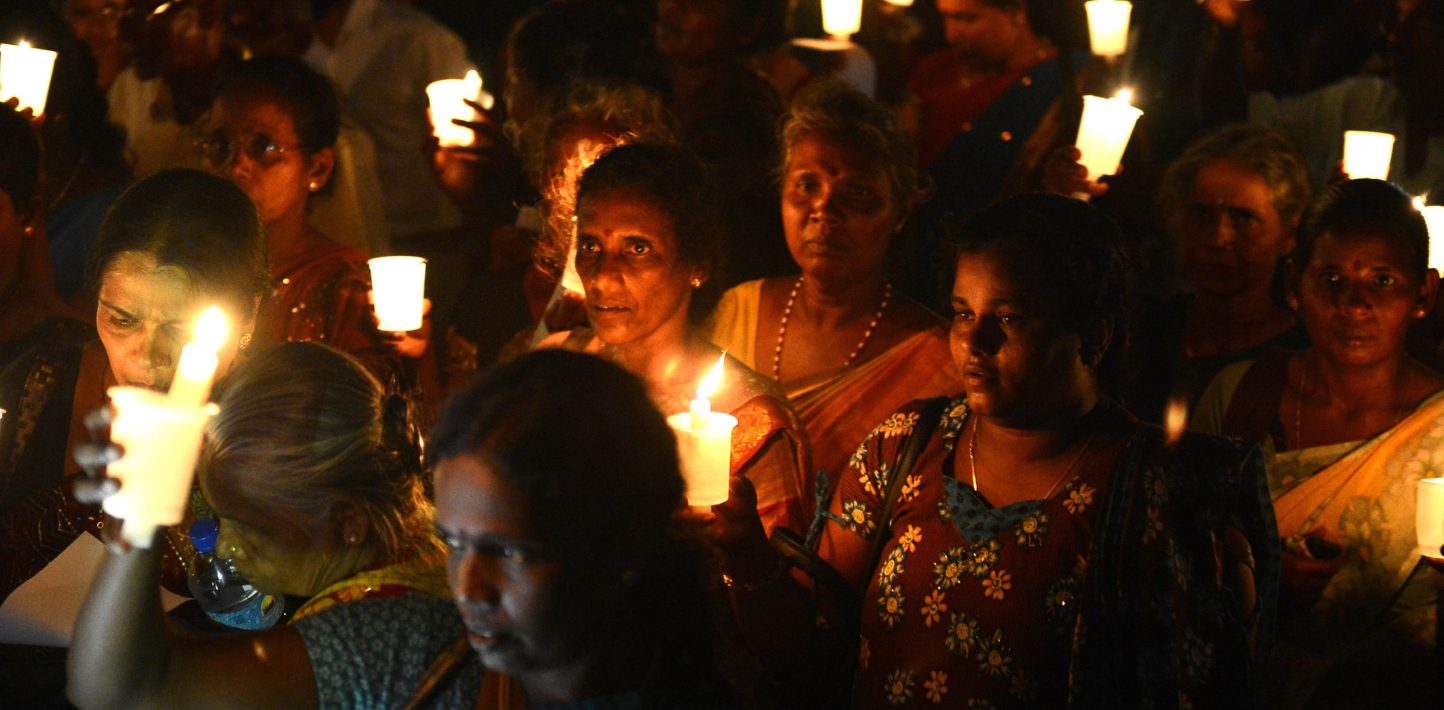It is difficult to imagine anything more traumatic than the sudden disappearance of a loved one. The scramble for any facts that can be established with any clarity. The yearning to know, the pain of imagining. The flame of hope that subsides to a barely perceptible flicker, never quite extinguished by the passage of time. There can be no real certainty, no closure, no moving on.
Sithy Ameena, Sandya Ekneligoda and Vathana Suntharajaj all share this sense of perpetual grief. Though the critical voices of their children and husbands may have been silenced as a result of their enforced disappearances, these women have refused to fade into anonymity and stay quiet. Standing in for the disappeared, they are asking Sri Lanka to account for its harrowing past.
Twenty six years of armed conflict, which reached a brutal climax in 2009, has left an indelible mark on the nation. In its wake, Sri Lankans are still grappling with what will happen to their land and property and how they will be compensated for wrongs they have suffered.
One of the most important question many are asking is this: what happened to their loved ones?
Enforced disappearances have occurred on a staggering scale in Sri Lanka, affecting every community and uniting them in grief. The perpetrators came from all sides – not just the government, but also the LTTE. With backlogs of up to 100,000 cases of unresolved disappearances dating back to the 1980s, there is no shortage of examples of cruelty.
Whether Sri Lanka can deliver on the demands of families of the disappeared for truth, justice, reparation and guarantees of non-recurrence is the acid test for broader efforts to address impunity in the country.
Salil Shetty, Secretary General of Amnesty International
The legal term may be clunky – “enforced disappearance” – but the human story is simple: People literally disappear, from their loved ones, when state officials (or someone acting with state consent) grab them from the street or from their homes and then deny it, or refuse to say where they are. It is a crime under international law. Yet the families of victims are often given no easy route to seeking justice and are unable to properly mourn their loss.
Whether Sri Lanka can deliver on the demands of families of the disappeared for truth, justice, reparation and guarantees of non-recurrence is the acid test for broader efforts to address impunity in the country.
But there are some who argue that the country can only start building its future by forgetting this past. This would be unwise, if not impossible. While those who have been forcibly disappeared may no longer be physically present, the impact of their absence weighs heavily. Their loved ones struggle to make ends meet, because they may have now lost the main breadwinner. Children, both Sinhala and Tamil, are being raised by grandparents or single parents. For communities across the country, there is no forgetting.
That is why, today, Amnesty International is publishing a new report on enforced disappearances in Sri Lanka. In solidarity with the victims, our report aims to shine a light on the stories of the families and their seemingly endless search for justice.
Sandya Ekneligoda has been a key figure in helping to raise the profile of these grievous crimes. When her husband, the political cartoonist Prageeth Ekneligoda, disappeared two days before the 2010 presidential elections, she embarked on a long quest for justice. She lodged complaints at two police stations, but neither took any obvious steps to investigate his disappearance. She appealed to the Human Rights Commission of Sri Lanka; the Attorney General; the President and his wife; the United Nations Working Group on Enforced and Involuntary Disappearances; and the International Committee of the Red Cross. She traveled to Geneva, Switzerland, to attend the Human Rights Council session and press her husband’s case.
Sandya’s tenacity has pushed the authorities to open new investigations that uncovered evidence of involvement by military intelligence personnel in the disappearance. To date, she has attended court hearings at least 90 times since she first lodged her complaints. Her struggle is far from over.
Like Sandya, Sithy Ameena, Vathana Suntharajaj and the other women featured in our briefing, families of the disappeared know what they want and what they need. If Sri Lanka is to succeed in overcoming its violent past, policymakers must put the victims’ demands for genuine and effective measures to deliver justice, truth, reparation and guarantees of non-recurrence at the centre of its transitional justice process.
It is now a matter of when, not if. Nearly eight years have elapsed since Sri Lanka’s civil war ended, yet the government has asked the United Nations Human Rights Council for another two years to probe alleged war crimes, as well as enforced disappearances. While dealing with historical human rights abuses may require time, delaying will only serve to compound the suffering many have already gone through.
I met with Prime Minister Wickramasinghe who affirmed that the cabinet is discussing a roadmap for the implementation of an accountability process. They must commit to a public timeline in order to restore the people’s confidence that justice is on track and assure them that they are serious about taking action. The victims cannot wait any longer.


